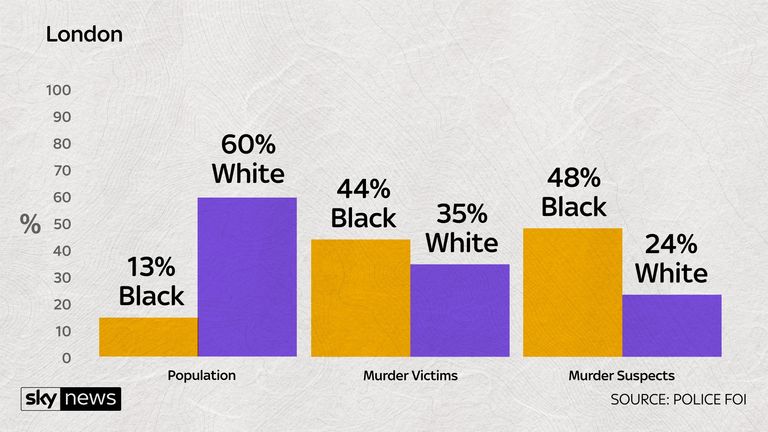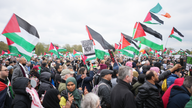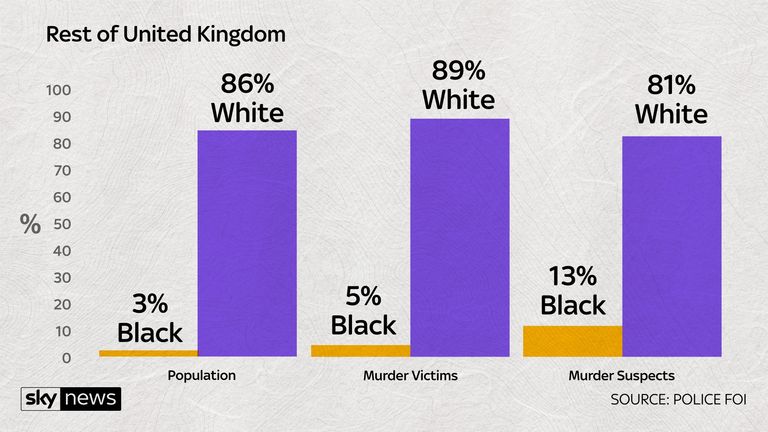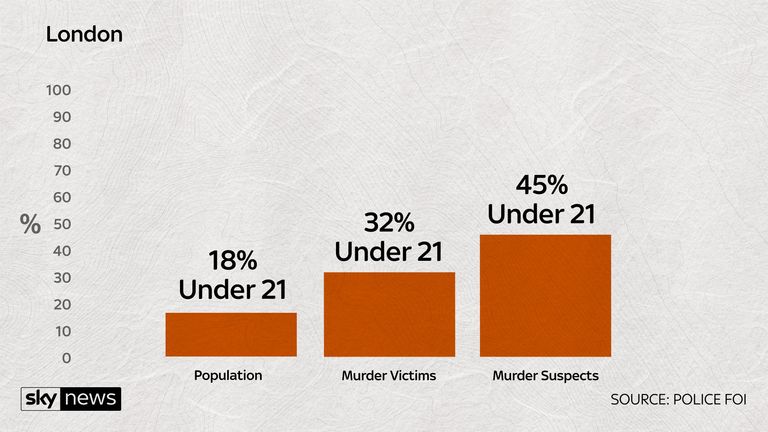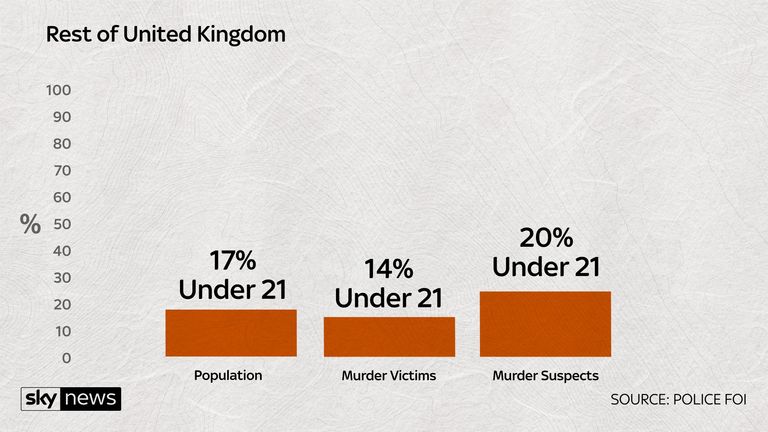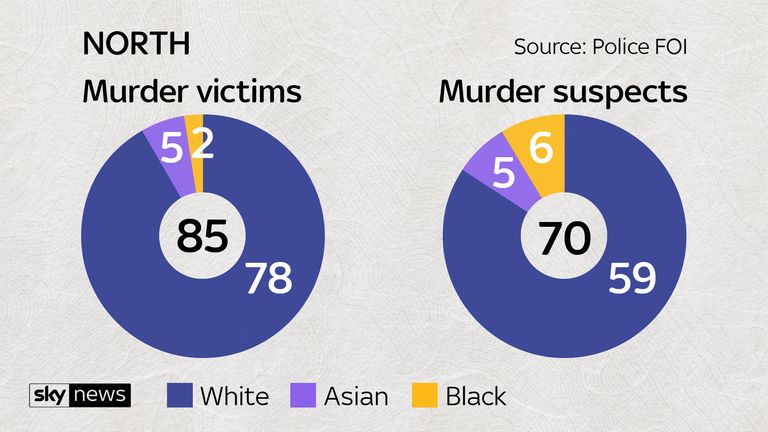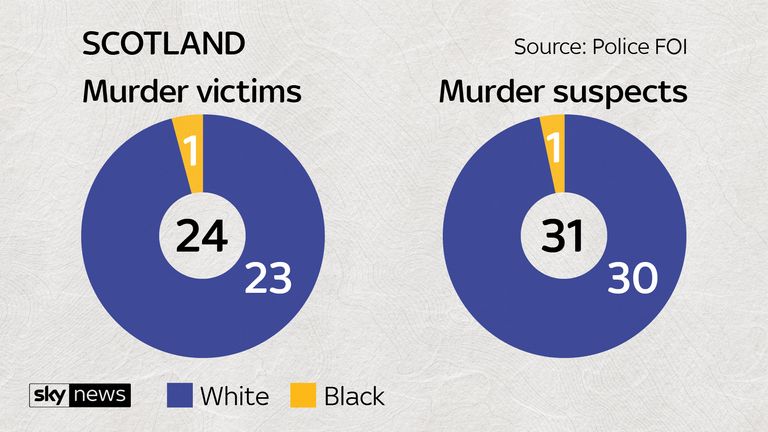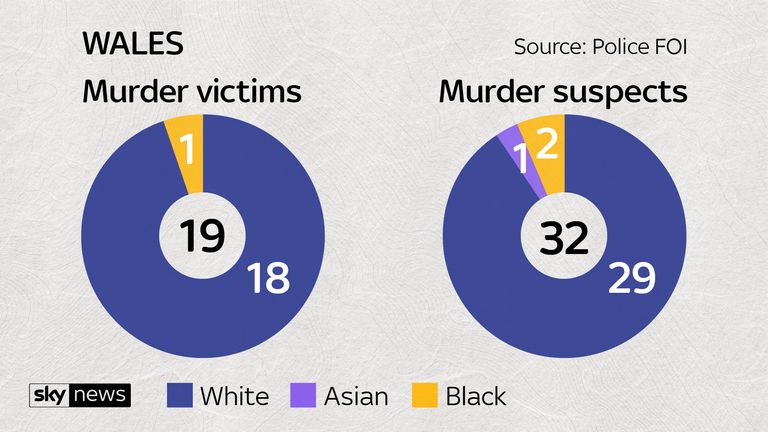Black murder victims and suspects: London v UK
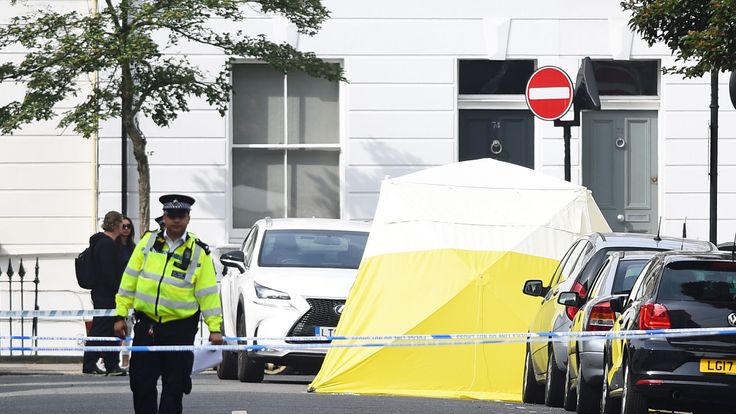
Wednesday 25 July 2018 05:55, UK
Black people in the capital are disproportionately the victims of murder when compared with other groups, new figures have revealed.
A Sky News freedom of information request to every police force in the country showed London was unique when it came to murder statistics.
Almost half of murder victims - as well as suspects - were black despite the ethnic group accounting for just 13% of London's population.
White people in London make up 60% of the population, but only account for 35% of murder victims and 24% of murder suspects.
Numbers for the rest of the country painted a different picture, with murder victim and suspect figures more or less proportionate to the make up of the population.
Nationally, 3% of the population is black, 5% of murder victims are black and 13% of murder suspects are black.
White people make up 86% of the country, 89% of the UK's murder victims and 81% of its murder suspects.
The police figures also showed young people were disproportionately the victims and suspects of murders in the capital.
Despite just 18% of Londoners being under 21, they accounted for almost a third of total murder victims, and almost half of murder suspects.
The London figures for young victims and suspects are almost double those for the rest of the country.
The 17% of under-21s in the rest of the country accounted for 14% of murder victims and 20% of suspects.
Figures were more in line with the rest of the country when it came to gender.
The male population of London, which stands at 50%, accounted for 81% of murder victims and 94% of murder suspects.
Men in the rest of the country, a total of 49%, made up 69% of victims and 92% of those accused or charged.
:: The figures in your area
Line 18 is a journey through modern Britain in 2018. It runs the length of the UK from Northern Ireland into Scotland, passing through Lancashire, Manchester, the West Midlands, London and Essex.
It will examine the divides and fractures in society through the voices of those affected, and backed up by data which shines a new light on how Britain is changing.
